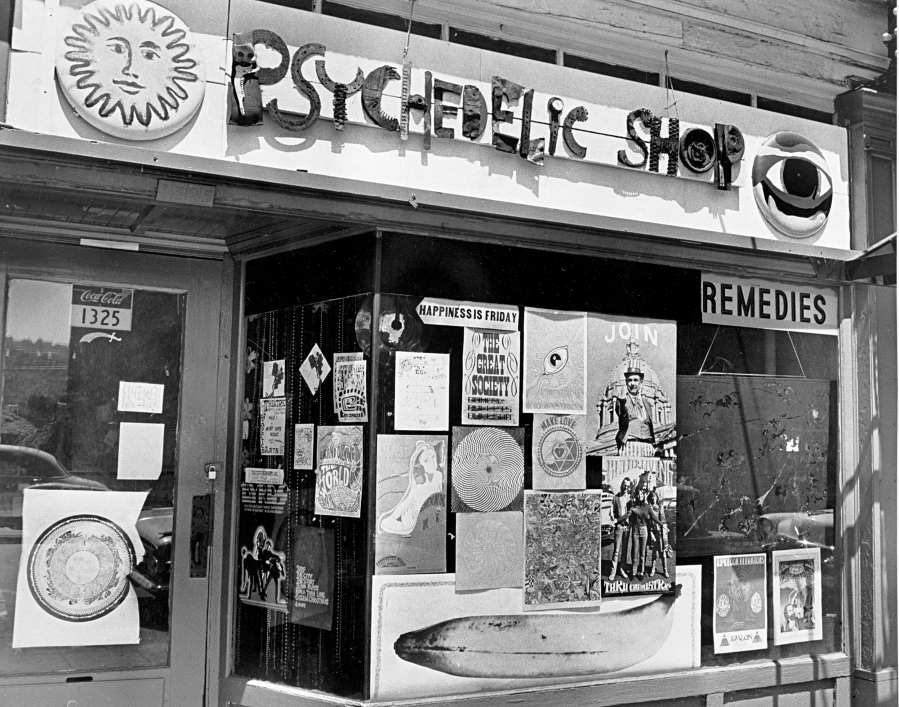“The dream of the ’90s is alive in Portland,” the satirical TV show “Portlandia” proudly sings — that dream being to form a rock band and save the planet while letting your precious individualism hang out in all its eclectic glory. Cover yourself with artistic tatoos, go to clown school and clamber up on that double-decker bike — why not?
Maybe the dream of the ’90s is really the recycled dream of the psychedelic 1960s, when rock bands and revolution — both political and personal — became a way of life. And Portland, a West Coast way station between Seattle and San Francisco, not only drew bands like the Beatles (in 1965), the Doors (in 1968) and Led Zeppelin (in 1972) — it also grew its own grass-roots musical and counter-cultural scene.
You can explore that scene in “Portland Psychedelic,” a colorful exhibit now on display at the Oregon Historical Society museum. It traces the history of beatniks and hippies, folkies and rockers as the earnest coffeehouse and folk-revival scene of the early 1960s eventually exploded with amplification, rebellion and, of course, drugs.
The exhibit doesn’t speak much to the serious social upheavals and political agonies of that era; it’s basically a short, strange trip through Portland’s music scene in the late 1960s and early 1970s via memorabilia like concert posters and handbills, autographed record sleeves and protest buttons. All of these souvenirs were donated to the museum by Peter Glazer of Lake Oswego, Ore., who was on the scene at the time and who managed to rub elbows with a wide variety of deejays, club owners and touring rock stars.




